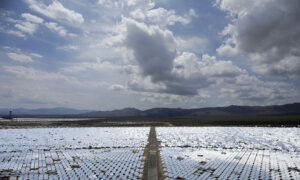NEW YORK—Broadway vs. Hollywood. Subway vs. Freeway. Judge vs. Ohtani.
New York neighbors who became cross-country rivals, the Yankees and Dodgers renew their starry struggle in the World Series for the first time in 43 years.
“When you’re playing for the Dodgers and playing for the Yankees, it better feel different,” LA manager Dave Roberts said at Yankee Stadium last June. “If not, you better do something different for a profession.”
Two of baseball’s most successful teams face each other starting Friday at Dodger Stadium, the Yankees coming off their 41st American League pennant and the Dodgers their 25th National League championship. New York is seeking its 28th World Series title but first since 2009, the Dodgers their eighth and second in a five-year span.
Yankees pinstripes vs. Dodgers Pantone 294. The Bronx Bombers vs. the Dem Bums’ descendants. The granite-and-limestone of new Yankee Stadium on chilly autumn nights vs. Dodger Stadium in sunny Chavez Ravine, with the San Gabriel Mountains beyond the pavilions.
New York is 8–3 against the Dodgers in the most frequent World Series matchup, including 6-1 against Brooklyn and 2-2 since the rivalry became Big Apple against Tinseltown.
Mickey Owen, Al Gionfriddo, Cookie Lavagetto, Sandy Amoros, Johnny Podres, Don Larsen, Sandy Koufax, and Reggie Jackson created indelible images in the matchup, which started in 1941 with one of the wackiest World Series turns.
Trailing 2–1 in the Series, Brooklyn led 4–3 with two outs in the ninth inning at Ebbets Field when Tommy Henrich swung and missed at strike three from Hugh Casey. The ball bounced away from Owen and rolled toward the Dodgers dugout as Henrich reached on the dropped third strike. Joe DiMaggio singled, Charlie Keller hit a two-run double and Joe Gordon added a two-run double later in the inning as the Yankees won 7–4 and went on to win the title in five games.
Lavagetto’s two-out, pinch walk-off double in the ninth ended Bill Bevens’ no-hit bid in 1947’s Game 4 and two games later Gionfriddo robbed DiMaggio of a tying three-run homer.
New York beat the Dodgers again in 1949 and 1952 and 1953, frustrating the fans in Flatbush, but Brooklyn finally won the title in 1955 when Johnny Podres pitched a Game 7 shutout at Yankee Stadium and Gil Hodges drove in both runs. Sandy Amoros preserved the lead when he made a running catch of Yogi Berra’s drive in the left-field corner with two on and relayed to shortstop Pee Wee Reese, who threw to Hodges at first and doubled up Gil McDougald. Those players were celebrated in Roger Kahn’s 1972 book “The Boys of Summer.”
Don Larsen pitched the World Series’ only perfect game in 1956’s fifth game in the Bronx, Berra jumping into his arms after the final out, and the Yankees won Game 7 behind Johnny Kucks’ three-hit shutout in what turned out to be the last World Series game at Ebbets Field.
Walter O’Malley moved the Dodgers to California after the 1957 season, and Koufax had an interlocking “LA” on his cap instead of a “B when he struck out a then-Series record 15 in the 1963 opener at Yankee Stadium. The rivalry didn’t resume until 1977 with the first of three matchups in a five-year span.
Jackson’s three home runs led the Yankees to a clinching win in 1977’s Game 6. The Yankees won another six-game Series the following year, highlighted by third baseman Graig Nettles’ diving stops on Reggie Smith, Steve Garvey and Davey Lopes.
Los Angeles lost the first two games in the Bronx in 1981, and then won four in a row—capped by a 9–2 victory that had Dodgers manager Tommy Lasorda dancing. The defeat prompted Yankees owner George Steinbrenner, his right hand bandaged after an alleged fight with Dodgers fans in a hotel elevator, to issue a written apology “to the people of New York and to the fans of the New York Yankees everywhere.”
Both teams feel the history created by their predecessors.
“You put that jersey on and those pinstripes, it just feels different,” Yankees slugger Juan Soto said.
Los Angeles took two of three when they met in a much-hyped series in June.
Roberts is reminded of the history when he approaches Dodger Stadium.
“I can’t believe I’m driving up Vin Scully Way, when I go to work,” he said. “It’s overwhelming, but I try not to let my head go there too often; I just try to do my job.”
By Ronald Blum














